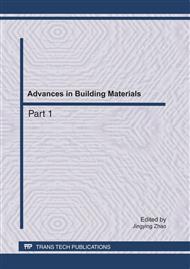p.1515
p.1523
p.1529
p.1534
p.1539
p.1544
p.1549
p.1554
p.1559
Experimental Study of Silty Clay's Deformation Fields Based on the Principles of Oedometer Tests
Abstract:
Based on the principles of conventional oedometer tests, half mold consolidation apparatus which attained Chinese Patent Certificate of New and Practical Device was designed for non-saturated soil's micro-observation with axial drainage conditions. By half mold consolidation tests, we could get similar stress-strain curves at different water content, which could illustrate the feasibility of the new apparatus. Besides, on the application of DPDM (the digital photogrammetry for deformation measurement) technology, the deformation fields of the silty clay were analyzed under monotonic increasing load, which could obviously show the macro mechanics properties by digital image analysis. According to the distribution of deformation fields, the analyzing area could be divided into three parts from top to bottom sequence: soil in top area subsided with upper porous-stone in balance; the deformation in the central area was changing the most whereas there had always been inapparent changes near down porous-stone. Such study could put forward a new conception for the development of conventional soil tests, which could be helpful to further establish the theoretical constitutive model for silty clay.
Info:
Periodical:
Pages:
1539-1543
Citation:
Online since:
May 2011
Authors:
Keywords:
Price:
Сopyright:
© 2011 Trans Tech Publications Ltd. All Rights Reserved
Share:
Citation:


